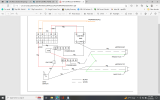CDHumiston
Gold Member
- Joined
- Feb 17, 2009
- Messages
- 1,464
Does anyone know of a source to buy a nice PID controlled Tempering Oven?
I know people make these at home and I've watched a lot of YouTube videos.
Bottom line is I don't want to make one as it looks like a lot of trouble.
I have a Paragon heat treat oven and it just takes too long to cool from 1950 to 300 degrees!
I guess I could put my blades in the freezer while I wait...
Has anyone tried out those $500 range 1/2 size ovens? I've been looking at this one.
Thoughts? Experience?
https://www.amazon.com/dp/B01K3L61L...olid=2UFDW4OK99MDQ&psc=1&ref_=lv_ov_lig_dp_it
I know people make these at home and I've watched a lot of YouTube videos.
Bottom line is I don't want to make one as it looks like a lot of trouble.
I have a Paragon heat treat oven and it just takes too long to cool from 1950 to 300 degrees!
I guess I could put my blades in the freezer while I wait...
Has anyone tried out those $500 range 1/2 size ovens? I've been looking at this one.
Thoughts? Experience?
https://www.amazon.com/dp/B01K3L61L...olid=2UFDW4OK99MDQ&psc=1&ref_=lv_ov_lig_dp_it




